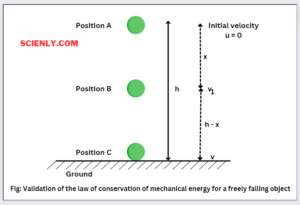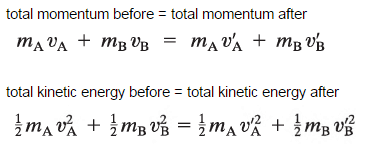Understanding the Law of Conservation of Energy is like unraveling the intricacies of a grand tapestry, where each thread interweaves into a beautiful mosaic of existence. This fundamental principle of physics is not merely an abstract theory; it is an essential law that governs every aspect of our universe.
When we delve into the depths of science, we discover that energy is a pervasive force, transcending its various forms—be it kinetic, potential, thermal, or chemical. The law posits that energy cannot be created nor destroyed; it merely transforms from one state to another. This remarkable concept serves as the backbone of multiple scientific disciplines, making it indispensable for our understanding of the natural world.
In this exploration, we will navigate through the myriad interpretations and implications of the Law of Conservation of Energy, illustrating its relevance in both scientific theory and practical applications.
The Essence of Energy: More than Just a Concept
Energy exists in many guises, like a chameleon that changes its colors depending on its surroundings. It is the driving force behind human endeavors, from the simplest act of a child playing to the complexities of launching a spacecraft into the cosmos.
At its core, energy can be classified into two primary types: potential energy, which resides in an object due to its position or state, and kinetic energy, which manifests in the movement of objects. The dance between these forms is characterized by the conservation principle, which elegantly states that the total energy in a closed system remains constant.
To illustrate, consider a pendulum swinging gracefully back and forth. At its highest point, the pendulum possesses maximum potential energy and minimal kinetic energy. As it descends, potential energy transforms into kinetic energy, achieving maximum kinetic energy at its lowest point. Yet, throughout this oscillation, the sum of potential and kinetic energy remains unaltered, demonstrating the perpetual cycle of energy transformation.
The Universality of the Law: From Nature to Technology
This law is not confined to academic discourse; its ramifications extend into our daily lives and technological advancements. Every time we flick a switch, we are reinforcing the unyielding principle of energy conservation.
Take, for instance, the intricate mechanisms involved in electric power generation. In a hydroelectric power plant, water stored in a reservoir possesses potential energy. As it cascades downward, this energy is converted to kinetic energy, driving turbines that subsequently generate electricity. Here, energy is not lost; it transitions from one form to another, enabling us to harness power efficiently.
Moreover, the law of conservation of energy is crucial when evaluating environmental impacts. As societies become increasingly reliant on various forms of energy, understanding the transformation and consumption patterns is paramount for sustainable development. It reminds us that every joule of energy we utilize carries significant consequences for our planet, reinforcing the need for mindful energy management.
The Implications for Environmental Stewardship
The relationship between the Law of Conservation of Energy and environmental advocacy is profound. Humanity stands at a crossroads, facing unprecedented challenges such as climate change, resource depletion, and biodiversity loss. Each of these issues can be scrutinized through the lens of energy conservation.
To illustrate, consider fossil fuels—the primary source of energy for industrialized nations. The extraction and combustion of these fuels release carbon dioxide and other greenhouse gases into the atmosphere, profoundly disrupting the energy balance of our planet. Applying the principle of energy conservation compels us to rethink our energy sources and consumption patterns. The transition to renewable energy sources, such as solar, wind, and hydro, offers a glimpse of a sustainable future. These energies not only preserve the equilibrium of energy transformation but also minimize detrimental environmental impacts.
The Law of Conservation of Energy serves as a poignant reminder of our interconnectedness with nature. As we strive to respect this balance, we embrace a broader understanding of our role as stewards of the planet, urging us to innovate and transform our energy systems to be more sustainable for future generations.
Bridging Science and Philosophy: A Reflective Conclusion
Ultimately, the Law of Conservation of Energy acts as a bridge between the realms of science and philosophy. It invites profound reflections on our existence, urging us to consider how we interact with the energy around us. In a time where our actions sway the balance of ecosystems, the tenets of this law accentuate our responsibility.
As stewards of the earth, acknowledging the significance of energy conservation is vital in navigating the complexities of modern living. Adopting sustainable practices is not merely an option; it is a necessity for ensuring that the balance of energy is respected and preserved.
In conclusion, the Law of Conservation of Energy is not just a scientific axiom but a profound guiding principle that permeates our lives. It beckons us to engage in thoughtful discourse about our energy choices, urging us toward innovation, accountability, and sustainability. By embracing this essential law, we pave the way for a future that honors the foundational principles of nature while fostering a harmonious relationship with the world around us.







